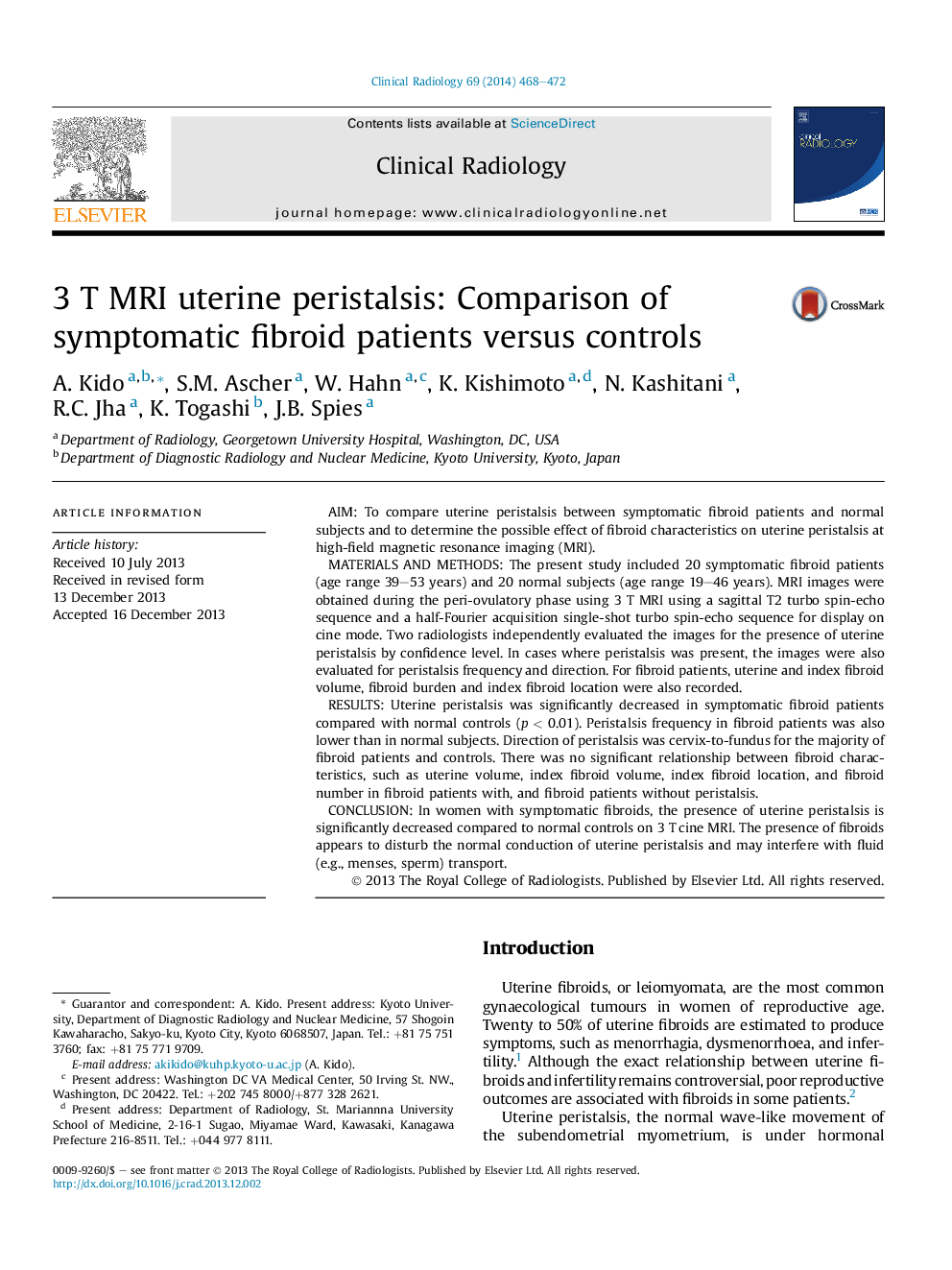| Article ID | Journal | Published Year | Pages | File Type |
|---|---|---|---|---|
| 3982338 | Clinical Radiology | 2014 | 5 Pages |
AimTo compare uterine peristalsis between symptomatic fibroid patients and normal subjects and to determine the possible effect of fibroid characteristics on uterine peristalsis at high-field magnetic resonance imaging (MRI).Materials and methodsThe present study included 20 symptomatic fibroid patients (age range 39–53 years) and 20 normal subjects (age range 19–46 years). MRI images were obtained during the peri-ovulatory phase using 3 T MRI using a sagittal T2 turbo spin-echo sequence and a half-Fourier acquisition single-shot turbo spin-echo sequence for display on cine mode. Two radiologists independently evaluated the images for the presence of uterine peristalsis by confidence level. In cases where peristalsis was present, the images were also evaluated for peristalsis frequency and direction. For fibroid patients, uterine and index fibroid volume, fibroid burden and index fibroid location were also recorded.ResultsUterine peristalsis was significantly decreased in symptomatic fibroid patients compared with normal controls (p < 0.01). Peristalsis frequency in fibroid patients was also lower than in normal subjects. Direction of peristalsis was cervix-to-fundus for the majority of fibroid patients and controls. There was no significant relationship between fibroid characteristics, such as uterine volume, index fibroid volume, index fibroid location, and fibroid number in fibroid patients with, and fibroid patients without peristalsis.ConclusionIn women with symptomatic fibroids, the presence of uterine peristalsis is significantly decreased compared to normal controls on 3 T cine MRI. The presence of fibroids appears to disturb the normal conduction of uterine peristalsis and may interfere with fluid (e.g., menses, sperm) transport.
